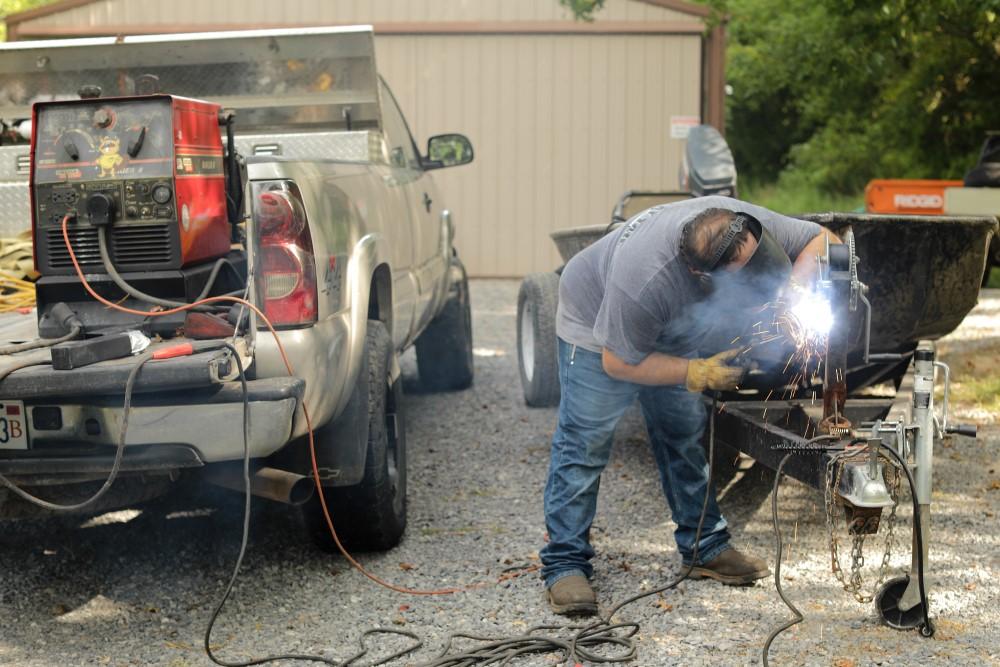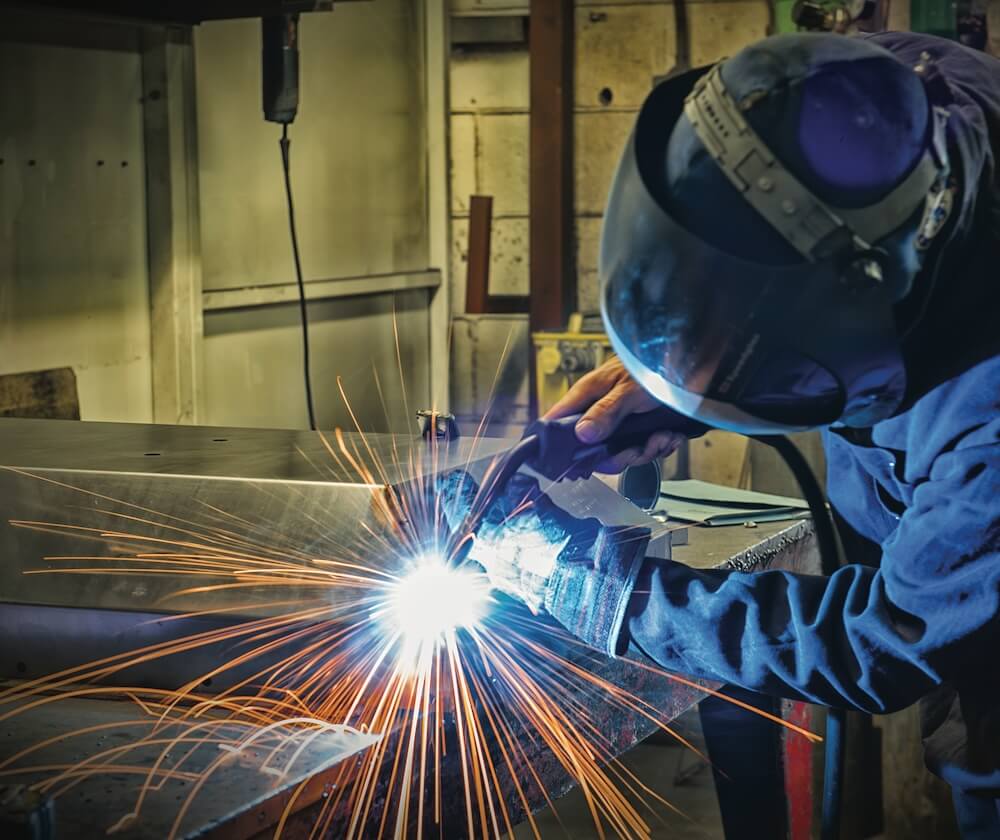Common Welding Repair Issues and Exactly How to Address Them Successfully
Welding repair services commonly run into a series of issues that can threaten the honesty of the end product. Usual issues include poor infiltration, porosity, and misalignment, amongst others. Each issue offers one-of-a-kind challenges that require particular strategies for resolution. Recognizing these issues is necessary for welders intending to improve their skills and end results. This discussion will check out these common welding repair work concerns and efficient techniques to resolve them.
Inadequate Infiltration
Inadequate penetration happens when the weld metal fails to totally fuse with the base material, leading to weak joints and prospective structural failures. This issue often stems from not enough heat input, inaccurate electrode angle, or inappropriate welding speed. Welders might run into poor infiltration because of a miscalculation of the essential criteria for a certain product density or type. Additionally, contamination on the base material's surface area can hinder efficient bonding, worsening the trouble. To resolve insufficient infiltration, welders should guarantee proper settings on their equipment and maintain a clean job surface area. Routine assessment of welds is advised to recognize any shortages early, enabling timely adjustments and the prevention of endangered structural honesty in bonded assemblies.
Porosity
Porosity is a common problem in bonded joints that materializes as tiny gas bubbles trapped within the weld metal. This problem can endanger the honesty of the weld, leading to decreased stamina and possible failure under stress. Montana Mobile Welding and Repair. Porosity generally arises from contamination, wetness, or improper welding methods, which permit gases to get away right into the molten weld swimming pool. To address porosity, welders ought to guarantee appropriate surface preparation, maintain a clean workplace, and use suitable welding parameters. Additionally, picking the right filler material and securing gas can reduce gas entrapment. Routine assessment and screening of welds can aid identify porosity early, assuring timely rehabilitative actions are taken, thereby protecting the high quality and dependability of the welded framework
Misalignment
Imbalance in welding can occur from numerous factors, including inappropriate setup and thermal expansion. Understanding the origin is necessary for efficient resolution. Several modification techniques are available to straighten components and assure architectural integrity.
Root causes of Misalignment
Welding imbalance commonly stems from a variety of underlying issues that can endanger structural integrity. One key cause is incorrect fit-up of parts prior to welding, which can cause gaps and unequal surface areas. Variants in thermal expansion during the welding procedure can also result in distortion, particularly if the products being signed up with have various coefficients of expansion. In addition, insufficient clamping and fixturing might fail to hold components safely in place, causing activity during welding. Poorly kept devices, including welding equipments and devices, might introduce disparities in the weld grain, further contributing to misalignment. Ultimately, driver error, originating from inadequate training or experience, can likewise play a considerable function in developing misaligned welds.
Correction Methods Readily Available
Resolving imbalance properly calls for a mix of corrective techniques customized to the details problems handy. One usual method is the use of jigs or fixtures to hold components in the appropriate placement throughout welding, making certain regular placement. Furthermore, preheating the products can help reduce distortion and boost fit-up. For substantial imbalance, mechanical realignment strategies, such as making use of hydraulic jacks or clamps, can be employed to remedy the position before welding. Post-weld heat treatment may additionally be essential to relieve stresses caused by misalignment. Mindful inspection and change throughout the arrangement phase can prevent misalignment problems from coming to be substantial troubles, advertising a smoother welding process and boosting total architectural honesty.
Distortion
Distortion is a common challenge in welding that can arise from numerous aspects, including irregular home heating and cooling. Understanding the causes of distortion is vital for applying efficient prevention techniques. Resolving this problem not only boosts architectural integrity but likewise boosts the overall top quality of the weld.
Sources of Distortion
When based on the extreme warmth of welding, products frequently undertake modifications that can bring about distortion. This phenomenon mostly arises from thermal growth and tightening throughout the welding procedure. As the weld area heats up, the product broadens; upon air conditioning, it acquires, which can develop interior stresses. Additionally, irregular heating across a work surface can exacerbate these stress and anxieties, resulting in bending or bending. The kind of material also plays a substantial role; steels with varying thermal conductivity and coefficients of growth may react differently, leading to uncertain distortions. Furthermore, inadequate joint layout and poor fixturing can add to misalignment during welding, raising the possibility of distortion. Understanding these causes is essential for efficient welding repair service and avoidance techniques.
Prevention Techniques
Effective prevention strategies for distortion during welding emphasis on regulating warmth input and ensuring proper joint style. Preserving a constant warm input helps to pop over to these guys decrease thermal expansion and contraction, which can lead to distortion. Making use of methods such as preheating the workpiece can likewise reduce the temperature slope, promoting consistent heating. In addition, picking suitable joint designs, such as T-joints or lap joints, can enhance security and decrease stress and anxiety concentrations. Executing proper fixturing to secure the workpieces in location even more help in keeping positioning throughout the welding procedure. Ultimately, staggered welding series can disperse heat extra equally, preventing localized distortion. By using these techniques, welders can considerably reduce the possibility of distortion and improve the overall high quality of their welds.
Cracking
Cracking is an usual concern encountered in welding repair services, usually arising from different aspects such as inappropriate cooling rates, product choice, or inadequate joint preparation. The event of fractures can significantly compromise the integrity of the weld, leading to prospective failures during operation. To resolve this problem, welders must initially evaluate the origin, ensuring that materials are suitable and suitably picked for the details application. Furthermore, managing the air conditioning price during the welding procedure is essential; quick cooling can induce stress and anxiety and lead to fracturing. Appropriate joint design and preparation additionally contribute to minimizing the danger. Carrying out these approaches can boost weld quality and durability, ultimately reducing the probability of cracking in ended up weldments.

Incomplete Combination
A considerable problem in welding repair work is insufficient fusion, which happens when the weld metal does not sufficiently bond with the base material or previous weld passes - Montana Mobile Welding and Repair Belgrade. This flaw can bring about weaknesses in the joint, possibly jeopardizing the honesty of the bonded structure. Variables contributing to incomplete fusion consist of insufficient warm input, improper welding method, and contamination of the surface areas being joined. To resolve this problem successfully, welders should assure appropriate pre-weld cleaning and surface preparation, along with readjust their welding specifications to achieve sufficient infiltration and fusion. Routine examination during the welding process can additionally aid determine insufficient fusion early, allowing for prompt restorative actions to boost the general quality of flux wire the weld
Overheating
While welding repairs can boost structural stability, overheating offers a substantial obstacle that can bring about product degradation. Extreme warm during welding can alter the mechanical residential or commercial properties of steels, resulting in reduced toughness, raised brittleness, and bending. This phenomenon is specifically critical in high-stress applications where architectural integrity is paramount. Determining getting too hot can entail visual inspections for discoloration or distortion, in addition to monitoring temperature level during the welding procedure. To alleviate the risks linked with getting too hot, welders ought to utilize ideal strategies, such as controlling warmth input, adjusting travel rate, and utilizing appropriate filler materials. Furthermore, applying pre- and post-weld warm treatments can assist bring back material homes and improve the overall top quality of the repair service, ensuring long-lasting performance and safety and security.
Frequently Asked Inquiries
What Are the Usual Signs of a Welding Problem?

Just How Can I Examine My Welds for High quality?
To test welds for quality, one can utilize aesthetic examinations, ultrasonic screening, and radiographic methods. Each technique guarantees architectural stability, recognizes issues, and validates adherence to specified standards, inevitably improving the dependability of the bonded joints.
What Security Precautions Should I Take While Welding?
When welding, one ought to focus on safety and security by putting on appropriate individual safety devices, ensuring correct ventilation, protecting combustible materials away, maintaining a tidy work area, and recognizing environments to avoid injuries and mishaps.
Can I Repair a Weld Without Redesigning the Entire Joint?
Repairing a weld without remodeling the entire joint is feasible, depending on the damage (Belgrade Welding). Methods such as grinding, including filler product, or making use of a welding process can properly deal with certain defects while maintaining the bordering structure
What Equipment Are Essential for Efficient Welding Fixes?
Essential devices for effective welding fixings consist of a welding device, cable brush, mill, safety equipment, clamps, and filler products. Each tool plays an important duty in guaranteeing top quality and safety during the repair procedure. Porosity commonly occurs from contamination, wetness, or inappropriate welding techniques, which enable gases to escape right into the molten weld pool. Inadequately kept equipment, including welding makers and tools, may present variances in the weld bead, additional contributing to imbalance. his explanation When subjected to the extreme warm of welding, products often undertake modifications that can lead to distortion. Breaking is a common issue run into in welding repair services, commonly resulting from various factors such as improper air conditioning rates, material selection, or poor joint prep work. A considerable concern in welding fixings is insufficient combination, which occurs when the weld metal does not appropriately bond with the base material or previous weld passes.